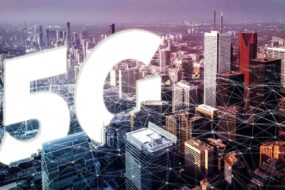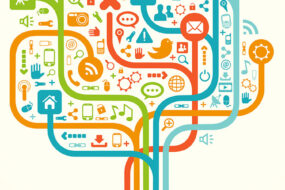
The Internet of Things (IoT) is no longer a futuristic concept; it’s a technology that’s already transforming industries, homes, and everyday life. With billions of devices connected to the internet, IoT is reshaping the way we live and work by creating an ecosystem of interconnected objects that can collect and exchange data. From smart refrigerators to autonomous factories, IoT is driving innovation and unlocking new opportunities for businesses and consumers alike. In this article, we’ll explore the growing impact of IoT devices, their applications across various sectors, and how they are shaping the future of connectivity.
1. What is the Internet of Things (IoT)?
At its core, the Internet of Things refers to the network of physical devices that are embedded with sensors, software, and other technologies to connect and exchange data with other systems over the internet or through wireless networks. These devices range from consumer products like smart thermostats to large industrial machines that monitor performance in real time.
Key Characteristics of IoT:
- Connectivity: IoT devices are connected to the internet or a local network, allowing them to send and receive data.
- Sensors and Actuators: Sensors collect data about the environment (e.g., temperature, humidity, motion), while actuators perform actions based on that data (e.g., turning on a fan, adjusting a thermostat).
- Automation and Control: Many IoT devices enable automation, meaning they can act independently based on pre-programmed rules or real-time data without requiring human intervention.
2. The Consumer IoT: Revolutionizing Everyday Life
In the consumer space, IoT is increasingly present in the products we use daily. Smart homes, wearable devices, and connected appliances have changed the way we interact with technology, making life more convenient, efficient, and personalized.
Key Examples of Consumer IoT:
- Smart Homes: Devices like Amazon Echo, Google Nest, and Apple HomeKit connect home appliances, lights, locks, and thermostats, allowing homeowners to control them through voice commands, smartphones, or automation. These systems improve convenience, save energy, and enhance security.
- Smart Wearables: Wearables such as Fitbit, Apple Watch, and Oura Ring monitor health metrics like heart rate, steps, sleep patterns, and even blood oxygen levels. These devices help individuals make healthier lifestyle choices and track fitness goals in real time.
- Connected Appliances: IoT-enabled appliances like smart refrigerators, washing machines, and vacuums offer features such as remote control, energy optimization, and maintenance alerts, improving efficiency and convenience for users.
Impact on Daily Life:
- Convenience: IoT enables automation and remote control, allowing consumers to perform tasks like adjusting lighting, controlling home temperature, or tracking health metrics from their smartphone or voice assistant.
- Energy Efficiency: Many IoT devices are designed to optimize energy use. For example, smart thermostats can learn user preferences and adjust heating or cooling systems accordingly, reducing energy consumption.
- Enhanced Security: Smart cameras, doorbells, and security systems allow homeowners to monitor and secure their property remotely, adding a layer of safety and peace of mind.
3. Industrial IoT (IIoT): Transforming Manufacturing and Industry
In the industrial sector, IoT is driving the Fourth Industrial Revolution, or Industry 4.0, by improving efficiency, reducing downtime, and enabling new business models. Industrial IoT (IIoT) devices are deployed in manufacturing plants, factories, and supply chains to monitor machinery, track inventory, and automate processes.
Key Applications of Industrial IoT:
- Predictive Maintenance: Sensors placed on machinery monitor its health and performance in real time, predicting when a machine might fail before it happens. This helps companies schedule maintenance proactively, minimizing unplanned downtime and repair costs.
- Supply Chain Management: IoT-enabled tracking devices provide real-time visibility into inventory levels, shipments, and warehouse conditions. This improves supply chain efficiency, reduces waste, and enhances transparency for businesses and customers.
- Smart Factories: In smart factories, machines communicate with each other and with centralized systems to optimize workflows, improve productivity, and reduce human error. This enables more flexible and agile manufacturing processes.
Impact on Business:
- Cost Savings: Predictive maintenance and real-time monitoring of machines help businesses avoid costly repairs and minimize downtime.
- Improved Productivity: Automated systems powered by IoT reduce the need for manual intervention and improve production efficiency by tracking assets and optimizing workflows.
- Real-Time Decision Making: IoT-enabled data analytics give manufacturers insights into operations, enabling them to make informed decisions and improve overall performance.
4. Healthcare IoT: Improving Patient Care and Efficiency
IoT is revolutionizing the healthcare sector by enabling remote patient monitoring, personalized treatments, and efficient hospital management. With the help of IoT, healthcare professionals can track patients’ vital signs, manage medical equipment, and enhance care quality.
Key Applications in Healthcare:
- Remote Patient Monitoring: Wearables and medical devices can monitor vital signs like heart rate, blood pressure, and glucose levels, allowing healthcare providers to track patients’ conditions in real time and intervene when necessary. This is particularly beneficial for patients with chronic conditions or those in rural areas with limited access to healthcare facilities.
- Smart Medical Devices: IoT-enabled devices such as smart inhalers, insulin pumps, and connected pacemakers can automatically administer treatments or deliver alerts to healthcare providers if something goes wrong, ensuring timely intervention.
- Hospital Management: IoT systems help hospitals track medical equipment, manage patient beds, and monitor environmental conditions like temperature and humidity in operating rooms. These systems ensure optimal conditions for patient care and prevent equipment loss or misuse.
Impact on Healthcare:
- Better Patient Outcomes: Continuous monitoring of patients’ health allows for early detection of problems and more timely interventions, improving overall health outcomes.
- Cost Efficiency: Remote monitoring reduces the need for in-person visits and helps hospitals manage resources more effectively, leading to cost savings.
- Personalized Care: IoT-enabled devices allow for more customized care, enabling healthcare providers to tailor treatments to individual patients based on real-time data.
5. Smart Cities: The Future of Urban Living
IoT is also transforming urban environments, making cities more connected, sustainable, and efficient. Through the integration of IoT technologies, smart cities use data to improve public services, optimize infrastructure, and enhance residents’ quality of life.
Key Applications in Smart Cities:
- Smart Traffic Management: IoT sensors embedded in roads, traffic lights, and vehicles provide real-time traffic data that can be used to optimize traffic flow, reduce congestion, and minimize emissions. This leads to more efficient transportation networks and reduced environmental impact.
- Smart Waste Management: IoT-enabled waste bins can notify city services when they are full, optimizing waste collection routes and reducing fuel consumption. This makes waste management more efficient and sustainable.
- Energy Management: Smart meters and energy grids allow cities to monitor and manage energy consumption in real time, improving efficiency and supporting sustainability initiatives.
Impact on Urban Life:
- Reduced Traffic Congestion: IoT-based traffic management systems optimize signal timings and adjust traffic flow to reduce congestion, making commuting easier and less time-consuming.
- Improved Environmental Sustainability: Smart waste management and energy systems help reduce waste, lower carbon emissions, and conserve resources, contributing to greener cities.
- Enhanced Public Services: IoT technologies enable more responsive public services by providing real-time data on infrastructure, utilities, and public safety, leading to quicker and more efficient interventions.
6. The Future of IoT: Opportunities and Challenges
The potential of IoT is immense, but as the number of connected devices continues to grow, there are challenges that need to be addressed.
Opportunities:
- Increased Automation: IoT will continue to drive automation across sectors, from manufacturing to healthcare, leading to more efficient and streamlined operations.
- AI and IoT Integration: The integration of Artificial Intelligence (AI) and IoT is expected to unlock new possibilities, such as smart factories with self-optimizing workflows or smart cities that use AI to predict and manage urban needs.
- Edge Computing: As IoT devices generate vast amounts of data, edge computing—processing data closer to where it’s generated—will become more important in reducing latency and improving real-time decision-making.
Challenges:
- Security and Privacy: With the massive growth of connected devices, IoT security and data privacy will become even more critical. Vulnerabilities in IoT devices could lead to breaches or misuse of sensitive information.
- Standardization: As the IoT ecosystem grows, the lack of universal standards for interoperability could hinder seamless integration between different devices and platforms.
- Data Management: Managing the huge volumes of data generated by IoT devices will require advanced analytics, storage solutions, and a robust infrastructure to ensure its proper use.
Conclusion: Connecting the World
The Internet of Things has already begun to change the way we live, work, and interact with our environment. Whether it’s through smart homes, industrial IoT, healthcare innovations, or the development of smart cities, IoT is connecting the world in ways that were previously unimaginable. As this technology continues to evolve, it will unlock even more opportunities for automation, sustainability, and personalization, making it a key driver of future innovations. However, as IoT grows, addressing challenges around security, privacy, and interoperability will be essential to fully realize its potential. The future of IoT is one of boundless possibilities, and it’s only just getting started.








